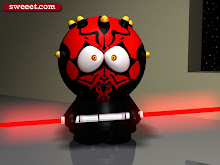Here's the blurb:
Adapted for a magnificent George Roy Hill film three years later (perhaps the only film adaptation of a masterpiece which exceeds its source), Slaughterhouse-Five (1969) is the now famous parable of Billy Pilgrim, a World War II veteran and POW, who has in the later stage of his life become ""unstuck in time"" and who experiences at will (or unwillingly) all known events of his chronology out of order and sometimes simultaneously.
Traumatized by the bombing of Dresden at the time he had been imprisoned, Pilgrim drifts through all events and history, sometimes deeply implicated, sometimes a witness. He is surrounded by Vonnegut's usual large cast of continuing characters (notably here the hack science fiction writer Kilgore Trout and the alien Tralmafadorians who oversee his life and remind him constantly that there is no causation, no order, no motive to existence).
The ""unstuck"" nature of Pilgrim's experience may constitute an early novelistic use of what we now call Post Traumatic Stress Disorder; then again, Pilgrim's aliens may be as ""real"" as Dresden is real to him. Struggling to find some purpose, order or meaning to his existence and humanity's, Pilgrim meets the beauteous and mysterious Montana Wildhack (certainly the author's best character name), has a child with her and drifts on some supernal plane, finally, in which Kilgore Trout, the Tralmafadorians, Montana Wildhack and the ruins of Dresden do not merge but rather disperse through all planes of existence.
Slaughterhouse-Five was hugely successful, brought Vonnegut an enormous audience, was a finalist for the National Book Award and a bestseller and remains four decades later as timeless and shattering a war fiction as Catch-22, with which it stands as the two signal novels of their riotous and furious decade.
You can also download Breakfast of Champions for 1.99$ here.
Here's the blurb:
Breakfast of Champions (1973) provides frantic, scattershot satire and a collage of Vonnegut's obsessions. His recurring cast of characters and American landscape was perhaps the most controversial of his canon; it was felt by many at the time to be a disappointing successor to Slaughterhouse-Five, which had made Vonnegut's literary reputation.
The core of the novel is Kilgore Trout, a familiar character very deliberately modeled on the science fiction writer Theodore Sturgeon (1918-1985), a fact which Vonnegut conceded frequently in interviews and which was based upon his own occasional relationship with Sturgeon. Here Kilgore Trout is an itinerant wandering from one science fiction convention to another; he intersects with the protagonist, Dwayne Hoover (one of Vonnegut's typically boosterish, lost and stupid mid-American characters) and their intersection is the excuse for the evocation of many others, familiar and unfamiliar, dredged from Vonnegut's gallery.
The central issue is concerned with intersecting and apposite views of reality, and much of the narrative is filtered through Trout who is neither certifiably insane nor a visionary writer but can pass for either depending upon Dwayne Hoover's (and Vonnegut's) view of the situation. America, when this novel was published, was in the throes of Nixon, Watergate and the unraveling of our intervention in Vietnam; the nation was beginning to fragment ideologically and geographically, and Vonnegut sought to cram all of this dysfunction (and a goofy, desperate kind of hope, the irrational comfort given through the genre of science fiction) into a sprawling narrative whose sense, if any, is situational, not conceptual.
Reviews were polarized; the novel was celebrated for its bizarre aspects, became the basis of a Bruce Willis movie adaptation whose reviews were not nearly so polarized. (Most critics hated it.) This novel in its freewheeling and deliberately fragmented sequentiality may be the quintessential Vonnegut novel, not necessarily his best, but the work which most truly embodies the range of his talent, cartooned alienation and despair.



0 commentaires:
Post a Comment